On this page
Pay.gov.sg
Open Government Products
Spinning up a payment service in 3 weeks to support $85mil worth of payments within 4 months of launch
My Role
Lead Designer
My Contribution
User Research, Product Strategy, User Experience Design, User Interface Design, Prototyping, Usability Testing, Frontend Development
About the Team
1 Product Manager, 1 Product Designer (myself), 3 Software Engineers, 1 Product Support Specialist

Problem Statement
When a government agency wants to collect payments, they will look for vendors to help them propose a solution, build a website, set up the payment form and related infrastructure. This might take months or even years. How might we empower government agencies to set up payment links? How might we make the payment experience a positive and quick experience for citizens?
Research Insights
We interviewed a few agencies and this is what we found -
- Agencies engage 3rd party vendors to integrate with NETS or AXS kiosk for collecting payments. Some are less familiar with the payment provider space and rely on vendors to propose solutions.
- This might take months to years and there is no ready system to collect payments for smaller, one-off ad hoc payments.
- They leverage on form builders with static PayNow QR to collect payments digitally. Wrong form inputs causes a lot of work at the reconciliation and verification process.
- The cash/cheque method also requires manual data entry and filing with longer turn around time with manual audit processes.
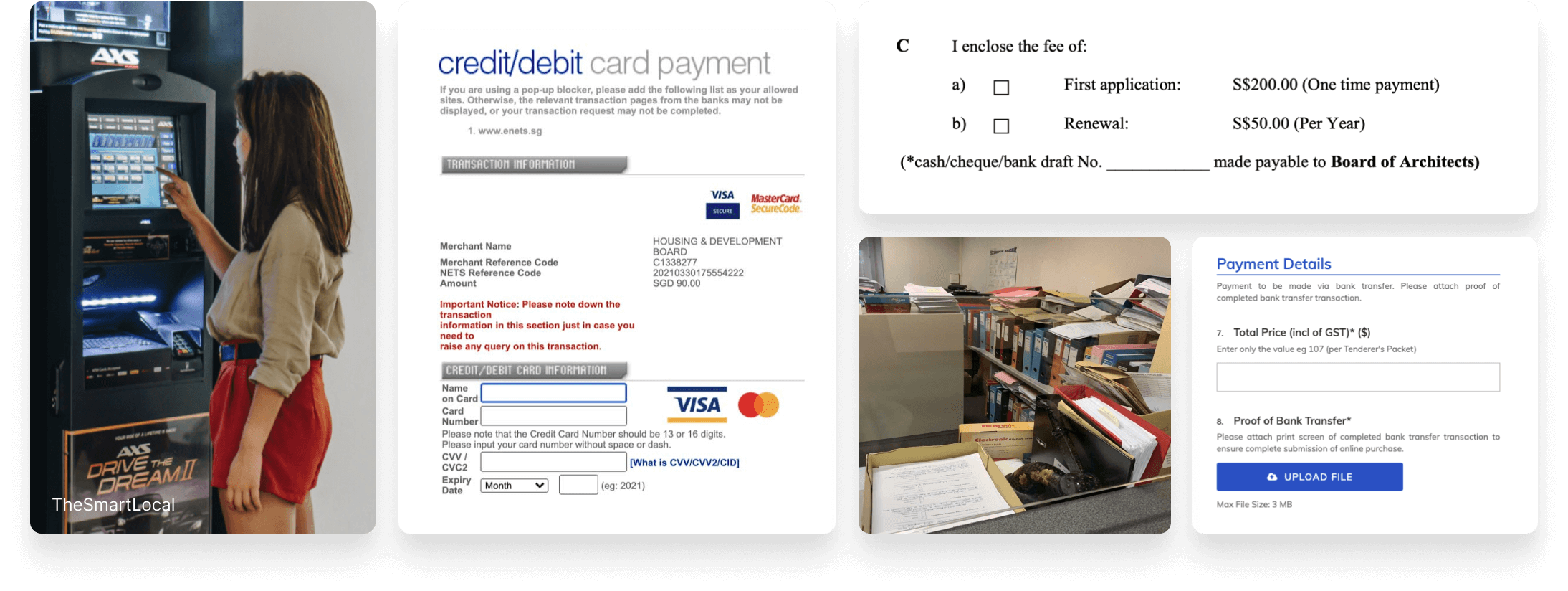
Team & Contributions
I was the lead and sole designer. I helped out with user research and testing. I did all the design work (mocks, prototypes, branding, visual design, ui design) and also worked on the frontend styling of the landing page, email templates for payment links and receipts.
Team: 1 Product Manager, 1 Product Designer (myself), 3 Software Engineers, 1 Product Support Specialist. We also worked with public servants at the various government agencies for the operational details.
The Challenge
In June 2020, Singapore wanted to open her borders to travellers and returning residents. The government needed a way to collect payments for COVID Swab Tests and compulsory quarantine accommodation. Multiple government agencies were involved as there were students, employees and other travellers seeking to enter Singapore.
Singapore wants to open our borders and we intend to charge inbound travellers for their swab tests and hotel stay if they quarantine here. Is your team able to develop a system to help us collect the payments? We need it running in 2 weeks.— COVID Task Force
The team that I worked with is most familiar with Stripe (amongst all the different payment gateways). We have worked with it (and a few more providers) on previous projects. Hence, we are confident that if can leverage Stripe's robust APIs and admin capabilities, we can put together something quickly.
Proposed MVP
We only have 2 weeks and this is the idea we came up with. The journey starts with a government officer who will collate an excel file consisting of the user information and payment details and send to the developers each day. And our system will create payment links and send them to the user emails so that they can make payment via the payment links. The user information can come from internal systems/ online forms etc.
Stakeholder Requirements
We worked with multiple government agencies including the Ministry of Manpower, Ministry of Education, Immigration and Checkpoints Authority. And all of them have very different requirements. To be able to deliver something in two weeks, requires focus and we narrowed down to these core requirements in green checkmarks and deprioritise those labelled as red crosses.
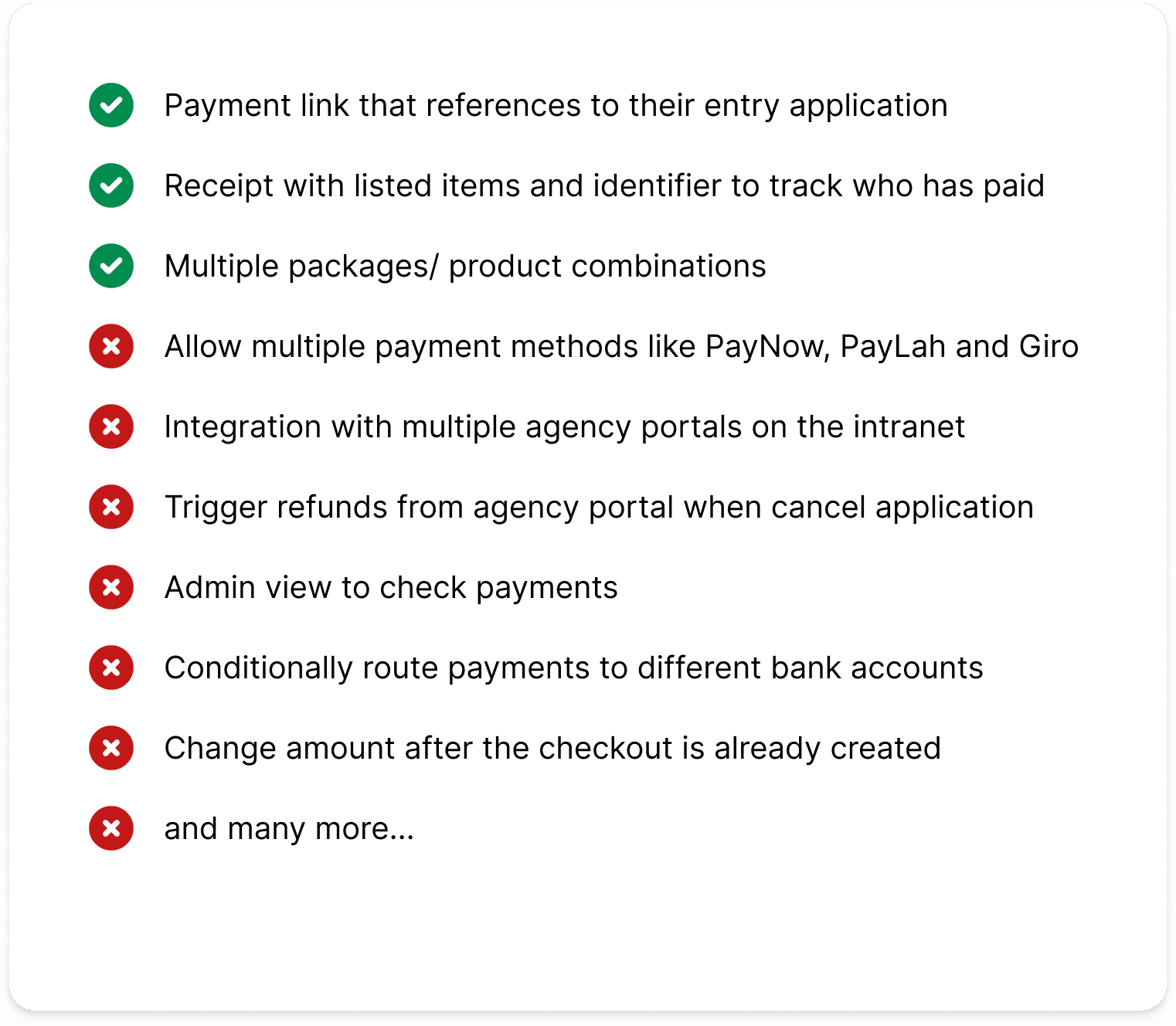

MVP Focus
Each payment, in this case, is in the ball park of thousands (due to the 14 day quarantine requirements). The team decided to focus on the payer experience and prioritise these screens.
- The email that the payer receives to make payment after applying to enter Singapore
- The unique payment link to make the payment
- The receipt specifying the items and amount paid for which person entering Singapore
This also means that we deprioritise things like a customised admin view, ability for officers to self-service, ability to make refunds, accept other payment types, payments in bulk, integrations with internal systems etc. As most of the refunds/finance tracking and audit can be handled in Stripe admin out of the box and others are less critical at this juncture (e.g. integration) compared to the base experience.
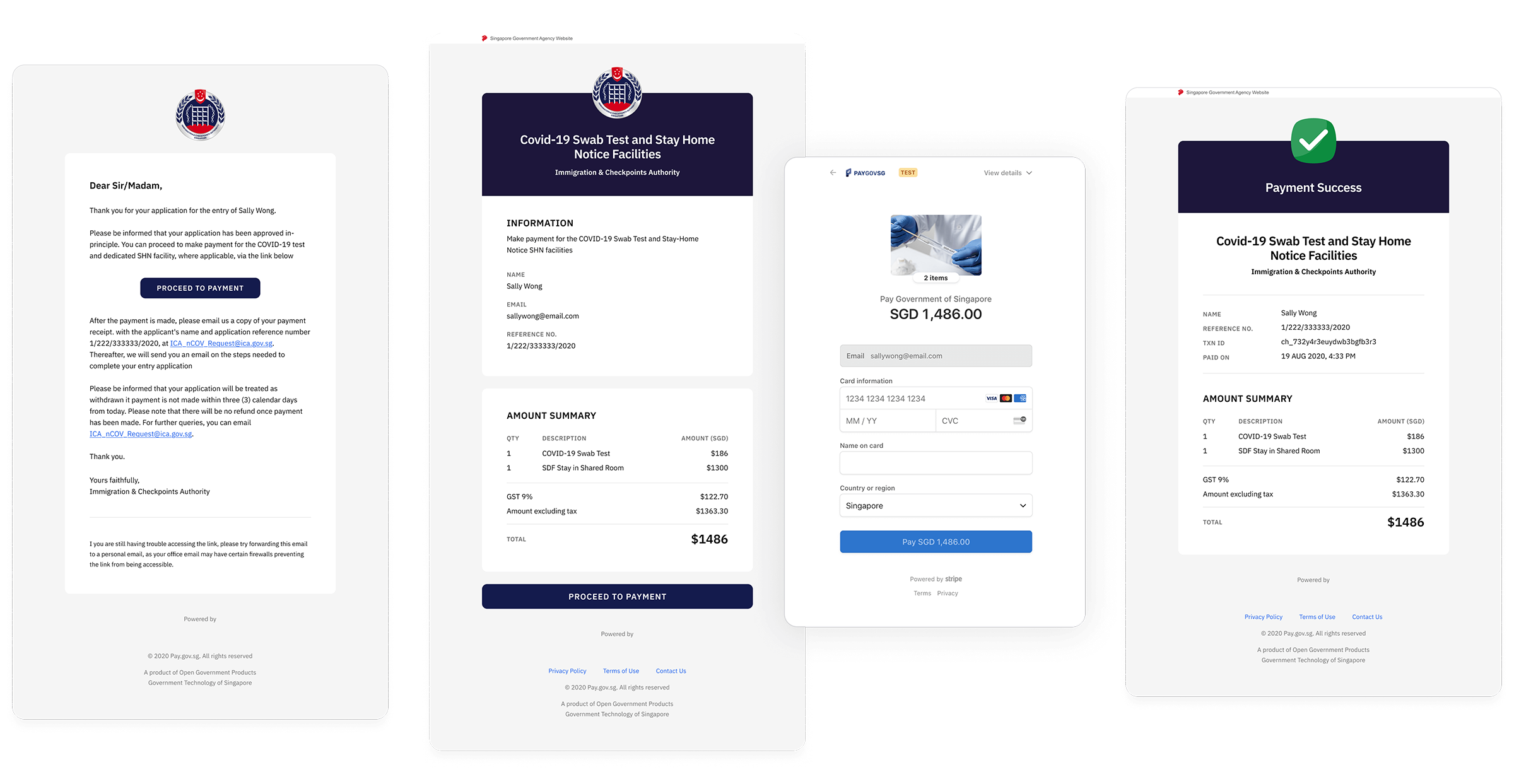
Establishing Credibility
Collecting payments online require building trust. How does the payer know this link is from the government? How do we make sure that travellers, citizens and companies who see the payment links, trust it to make payments of thousands of dollars?
We achieved this by making sure that
- The payment link is triggered by the agency/department that the user interacted with prior to this email.
- The email contains data that is provided by the user in earlier application. (e.g. application no./ identity no. / reference number)
- The email contains contact details of the department that supports this application
- The email cannot end up in junk mail.
- The branding and tone is formal and trustworthy. (No spelling mistakes. Clear instructions)
- The payment link is hosted on a .gov.sg domain.
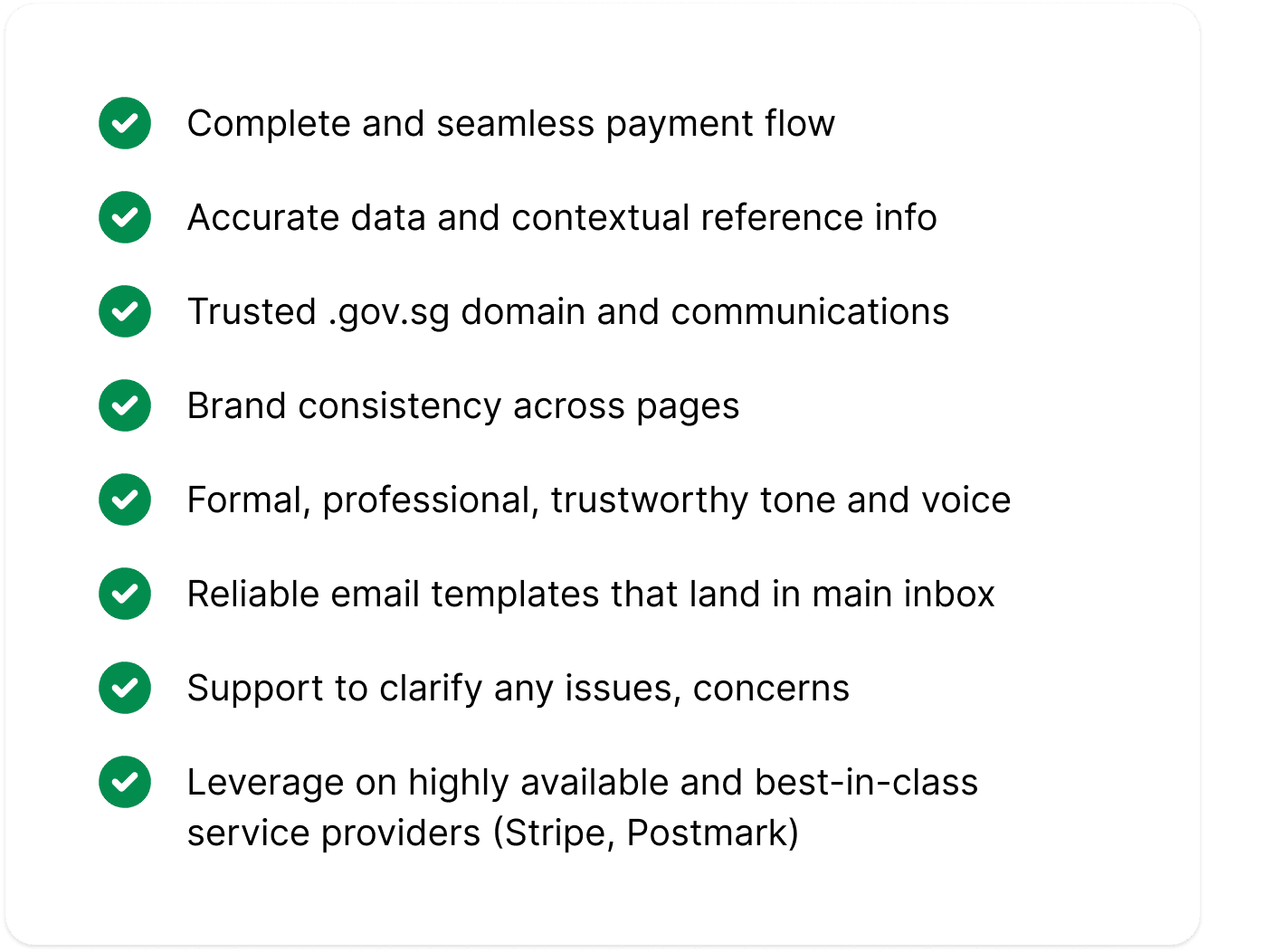
Reflections
This project is only possible because -
Existing team rapport is great
A great team to work with is not to be taken for granted. We had been through thick and thin together and we understand each others' strength and weakness.
Rely a lot on past experiences
Agencies we worked with trust our recommendation because of the good will and great work delivered in the past. Hence, stakeholders push back was manageable. We also made a lot of product decision based on our past developing other 2 payment products, bus booking and parking.
Little to no time for research and testing
One week of development and one week of testing it repeatedly with people around us. Not enough testing with main personas.
Making a lot of assumptions
We assume the baseline flow and just implemented that. I missed some edge cases and had to do product iterations, fixes and ops recovery support on those. (e.g. Employer bulk pay for staff, company fire walls and email clients link shortening)
Now that we have launched a payment service... Can we automate the manual portions? Think bigger!
How might we use this as a foundation for a government payment system in the long run to solve the problem mentioned in the research previously?

Long Term Vision
I facilitated a 2 day design thinking workshop with the team to unpack our learnings and our long term vision. And this is what we wanted to achieve in the long run -

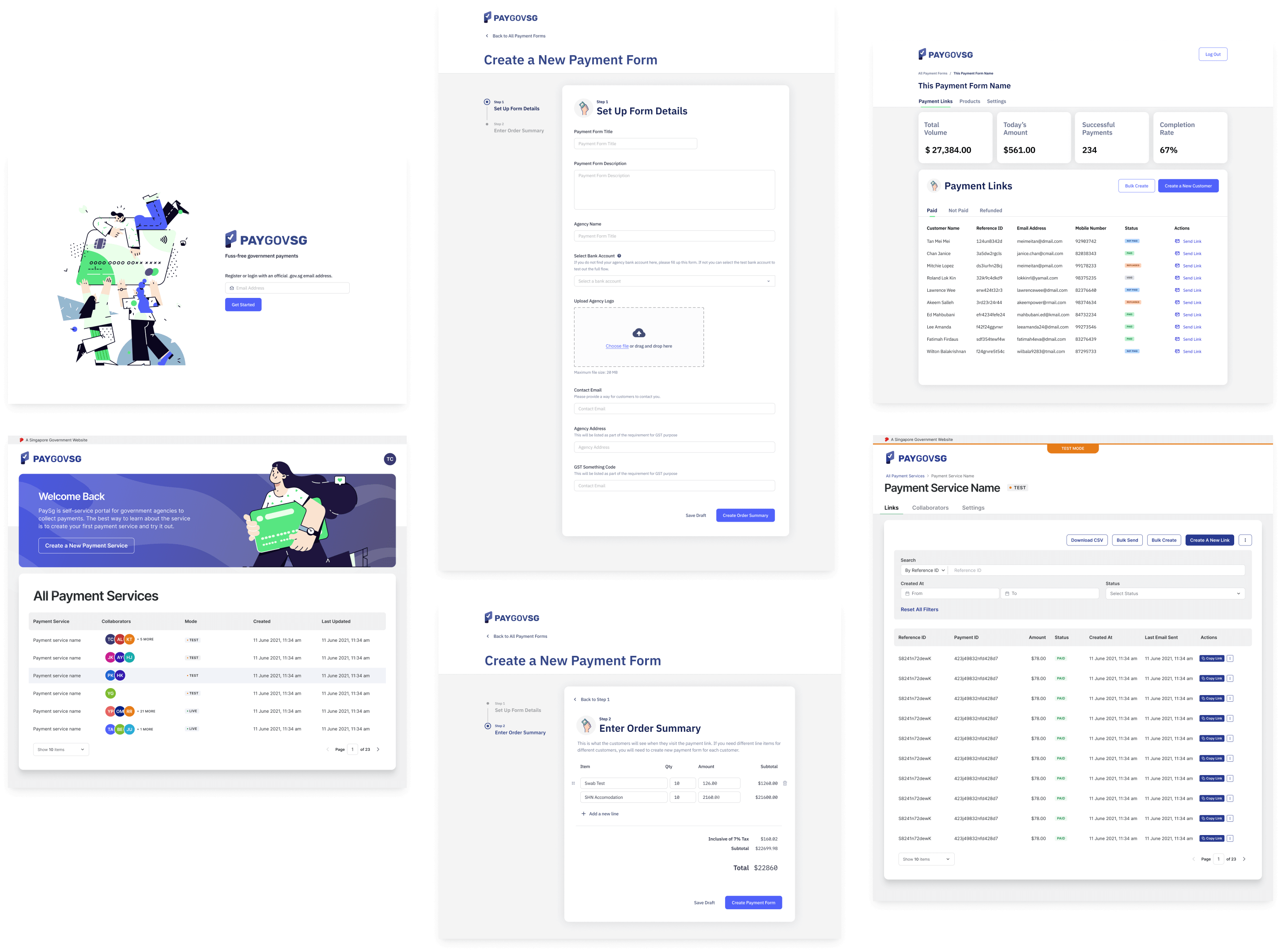

Design Elements
The visual identity for the payment system needed to convey trust and government credibility while being approachable for users making significant payments.
Illustrations
Visual elements that enhance the trustworthiness and professionalism of the payment experience.
I came up with some illustrations for the product by modifying royalty free illustrations from Freepik and standardising them with brand colors and styles

Logo
I designed the Pay Logo with a letter "P" and a checkmark inside to create the sense of assurance. The P also looks like a paper note fold-over.

Impact
As of Oct 2020, 4 months of operations
Conclusion
It is one of the most time compressed project I have done and I learnt that we can do so much if we focus. I left the organisation before I could finish this project, so I shall leave this in good hands of the team to continue. The version of the website you see in the link at the top of the page is built by the team that took over.